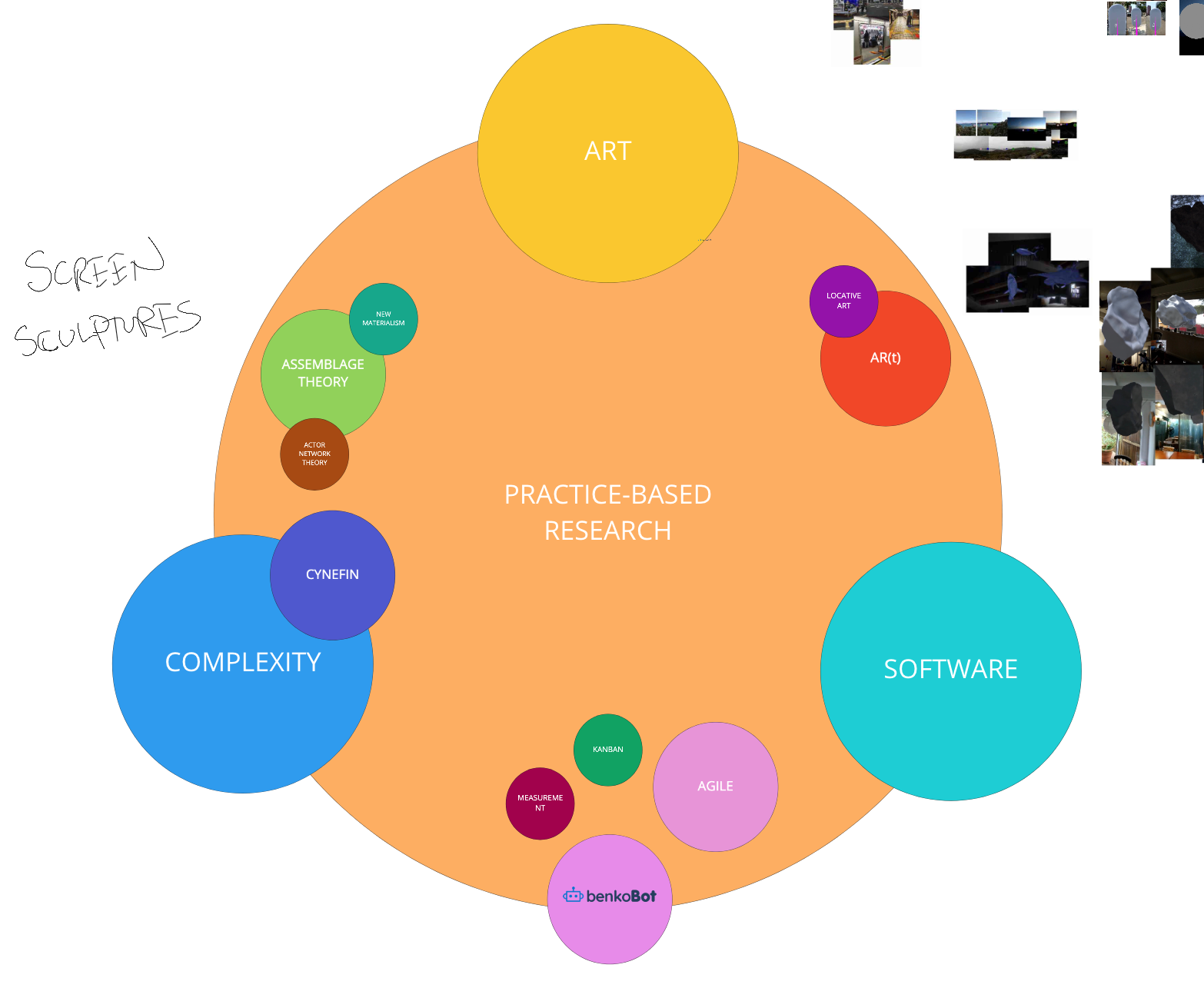Why complete the study? Why is it necessary?
Complex adaptive systems theory is becoming a kind of general theory of everything. It’s probably no coincidence that this is happening when we’re meeting incredible challenges as a species. Philosophically, Deleuze has become increasingly influential in the decade or so since his work was translated into English. Assemblage theory has become accessible for many disciplines through the work of Manuel DeLanda. New materialim and the “post-human turn” in the humanities has become a hugely influential perwpective that is profoundly influencing thought and practice at the boundary of art and technology.
This area is still young and connections are still being made particularly when it comes to the ‘implementation details’. What is the relationship between Cynefin, a sense-making framework with roots in knowledge managemet, and assemblage theory. How might art parctice be used in oprganisational change. How should artists engage with technologies that are shaping our identity as a species, more rapidly than we can comprehend.
Make a list of any evidence that exists to support your belief that your proposed research is worthwhile and necessary
When we were only several hundred-thousand years old, we built stone circles, water clocks. Later, someone forged an iron spring, set clockwork running, imagined grid-lines on a globe. Cathedrals are like machines defining the soul; bells of clock towers stitch the sleeper’s dreams together. You see? So we’ve always been on our way to this new place ― that is no place, really ― but is real. It’s our nature to represent: we’re the animal that represents, the sole and only maker of maps. And if our weakness has been to confuse the bright and bloody colors of our calendars with the true weather of days, and the parchment’s territory of our maps with the lands spread out before us ― never mind. We’ve always been on our way to this new place ― that is no place, really ― but is real (Gibson 2000).
My starting point was the imminent shift from an internet on the screen to an internet that is here with us in the world. It seems like we are about to embark on a huge experiment that will change us in such a fundamental way that we will be different as a species. Then I realised that this has already happened many times before - television, the internet, mobile phones etc. We keep inventing technologies that change our world profoundly and irrevocably - but now things are getting serious. Fossil fuels change the cimate and infect our ecosystem with plastic, social media disrupts politics, and increasingly powerful algorithms are accelerating and amplifying the effects of every change.
It seems like, just when we need to evolve our knowledge and awareness exponentially if we’re to find ways to survive and create, we are learning how to formalise and scale our natural human capabiulity to work with complexity. Conceptual tools like Cynefin and Assemblage Theory equip us with the ability to respond appropriately and with them, survival starts to look like a choice.
Although art is a central interest for Delueze, our mental model of art hasn’t been successfully updated. We might ask for an art that is radically connected but old ideas of what it is to be an artist hang around, obscuring the potential that art has to offer as a process and a strategy for the kind of radical reterritorialisations we desperately need to make as spcies. Why isn’t art central to the practice of change in our organisations and communities. Why do we still think art needs to be kept separate from the messy reality of commerce, politics and daily life? New materialism creates anoher possibility for an art that is engaged in and with the world, not side-stepping into transcendent disconnection or abdicating it’s power to transmute reality and settling for whatever is left.
References
No Maps For These Territories. (2000). [YouTube, viewed 28 September 2019, https://youtu.be/VVqW2pMGw6c] Directed by M. Neale. Canada: Mark Neale Productions.
